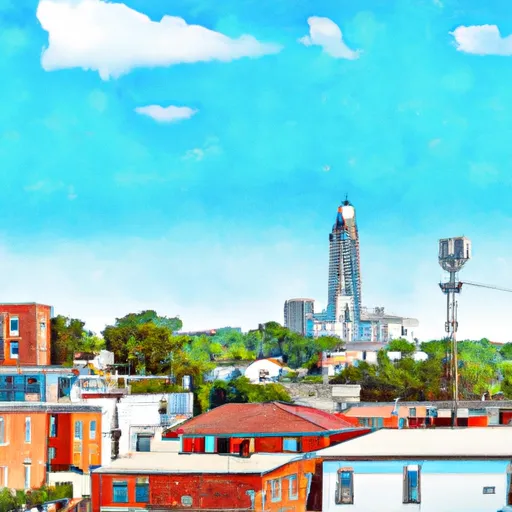-
 Snoflo Premium
Snoflo Premium
Get unlimited access to all our content
With no Ad interruptions! - Start Your Free Trial Login with existing account
Monticello
Eden Index
Climate
9.5
•
Recreation
2.8
•
Community
3.4
•
Safeguard
5.6/10

Monticello, Illinois is a charming town located in Piatt County. The region experiences a humid continental climate characterized by four distinct seasons. Summers are warm and humid, with average temperatures ranging from the mid-70s to low 90s Fahrenheit. Winters are cold, with temperatures averaging in the 20s and occasional snowfall. Spring and autumn bring mild temperatures and colorful foliage, making them ideal seasons for outdoor activities.
Monticello is blessed with several water bodies, including Lake Decatur, Sangamon River, and Clinton Lake. These hydrology constituents provide opportunities for various water-based activities like fishing, boating, and swimming. Clinton Lake State Recreation Area offers a picturesque setting for outdoor enthusiasts, with camping, hiking, and biking trails available.
In addition to its hydrological attractions, Monticello boasts several parks and green spaces, such as Forest Preserve Park and Lodge Park, offering opportunities for picnicking, walking, and enjoying nature. Golf enthusiasts can enjoy a round at Monticello Golf Club, featuring a beautiful course surrounded by scenic landscapes.
Overall, Monticello, Illinois offers a diverse climate, abundant water resources, and numerous outdoor recreation opportunities, making it an attractive destination for nature lovers and adventure seekers alike.
What is the Eden Index?
The Snoflo Eden Index serves as a comprehensive rating system for regions, evaluating their desirability through a holistic assessment of climate health, outdoor recreation opportunities, and natural disaster risk, acknowledging the profound impact of these factors on livability and well-being.
Climate Health Indicator (CHI): 9.5
Monticello receives approximately
996mm of rain per year,
with humidity levels near 79%
and air temperatures averaging around
12°C.
Monticello has a plant hardyness factor of
5, meaning
plants and agriculture in this region thrive during a short period during spring and early summer. Most
plants will die off during the colder winter months.
By considering the ideal temperature range, reliable water supplies, clean air, and stable seasonal rain or snowpacks, the Climate Health Indicator (CHI) underscores the significance of a healthy climate as the foundation for quality living.
A healthy climate is paramount for ensuring a high quality of life and livability in a region, fostering both physical well-being and environmental harmony. This can be characterized by ideal temperatures, reliable access to water supplies, clean air, and consistent seasonal rain or snowpacks.
Weather Forecast
Streamflow Conditions
Lower Illinois
Area Rivers
Lower Illinois
Snowpack Depths
Lower Illinois
Reservoir Storage Capacity
Lower Illinois
Groundwater Levels
Recreational Opportunity Index (ROI): 2.8
The Recreational Opportunity Index (ROI) recognizes the value of outdoor recreational options, such as parks, hiking trails, camping sites, and fishing spots, while acknowledging that climate plays a pivotal role in ensuring the comfort and consistency of these experiences.
Access to outdoor recreational opportunities, encompassing activities such as parks, hiking, camping, and fishing, is crucial for overall well-being, and the climate plays a pivotal role in enabling and enhancing these experiences, ensuring that individuals can engage in nature-based activities comfortably and consistently.
Camping Areas
| Campground | Campsites | Reservations | Toilets | Showers | Elevation |
|---|---|---|---|---|---|
| Sam Dale Lake Conservation Area | None | 493 ft | |||
| Clarkco State Park | None | 273 ft | |||
| Lake Tom Bailey | 32 | 299 ft | |||
| Stephen A. Forbes State Park | 135 | 604 ft | |||
| Turkey Fork Rec. Area | 76 | 278 ft | |||
| Charley Brown City Park | None | 487 ft | |||
| Maynor Creek Waterpark | None | 362 ft | |||
| Archusa Creek Waterpark | 69 | 315 ft | |||
| Opossum Creek - Shelbyville Lake | 80 | 654 ft | |||
| Gibson City Park | 4 | 731 ft |
Nearby Ski Areas
Catastrophe Safeguard Index (CSI):
The Catastrophe Safeguard Index (CSI) recognizes that natural disaster risk, encompassing floods, fires, hurricanes, and tornadoes, can drastically affect safety and the overall appeal of an area.
The level of natural disaster risk in a region significantly affects safety and the overall livability, with climate change amplifying these risks by potentially increasing the frequency and intensity of events like floods, fires, hurricanes, and tornadoes, thereby posing substantial challenges to community resilience and well-being.
Community Resilience Indicator (CRI): 3.4
The Community Resilience Indicator (CRI) recognizes that education, healthcare, and socioeconomics are crucial to the well-being of a region. The CRI acknowledges the profound impact of these elements on residents' overall quality of life. By evaluating educational resources, healthcare accessibility, and economic inclusivity, the index captures the essential aspects that contribute to a thriving community, fostering resident satisfaction, equity, and social cohesion.

